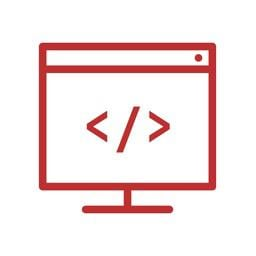Understanding Headless CMS: What It Is, How It Works, and Why It’s the Future of Web Development

Understanding Headless CMS: What It Is, How It Works, and Why It’s the Future of Web Development
Introduction
In today’s fast-evolving digital landscape, businesses need flexible and scalable solutions to manage their content efficiently. Traditional CMS platforms like WordPress and Drupal have served well for years, but they come with limitations in delivering content across multiple devices and platforms. This is where a Headless CMS becomes a game-changer, providing a modern approach to content management that enables seamless integration across multiple platforms. In this article, we will explore what a Headless CMS is, how it works, and why it is becoming the future of web development.
What Is a Headless CMS?
A Headless CMS is a modern content management system that decouples the backend (where content is stored and managed) from the frontend (where content is presented), enabling seamless integration with various digital platforms through APIs. Unlike traditional CMS platforms, which are tightly coupled to their front-end delivery systems, a Headless CMS allows content to be delivered to any device or platform via APIs.
Key Features of a Headless CMS:
-
API-Driven Content Delivery: Content is managed in the backend and delivered via APIs to different platforms.
-
Omnichannel Publishing: Content can be published on websites, mobile apps, smart devices, digital kiosks, and more.
-
Flexibility and Customization: Developers can use any frontend framework or technology they prefer.
-
Improved Performance and Scalability: Faster load times and better scalability compared to traditional CMS solutions.
How Does a Headless CMS Work?
A Headless CMS works by storing content in a structured format and delivering it through APIs. Below is a detailed step-by-step breakdown of how a Headless CMS operates:
-
Content Creation: Users create and manage content in the Headless CMS admin panel.
-
API Integration: The CMS exposes content through RESTful or GraphQL APIs.
-
Frontend Development: Developers use frameworks like React, Vue.js, or Angular to build the presentation layer.
-
Content Distribution: The content is dynamically fetched and rendered on different platforms, including web applications, mobile apps, IoT devices, and digital signage.
Benefits of Using a Headless CMS
1. Enhanced Flexibility
Developers have complete control over how content is presented, allowing for greater creativity and customization.
2. Faster Performance
By decoupling the front end from the backend, a Headless CMS reduces server load and improves page load speeds.
3. Better Security
With no direct connection between the CMS and the presentation layer, security vulnerabilities are minimized.
4. Easier Scalability
Businesses can scale their digital presence without being restricted by a single CMS framework.
5. Omnichannel Content Delivery
Content can be repurposed across multiple devices and platforms without requiring duplication.
Popular Headless CMS Platforms
Some of the leading Headless CMS solutions include:
-
Contentful
-
Strapi
-
Sanity
-
Prismic
-
Kentico Kontent
The Future of Web Development: Why Headless CMS Is Leading the Way
1. Growing Demand for Omnichannel Experiences
Consumers interact with brands across multiple touchpoints, including websites, mobile apps, and smart devices. A Headless CMS makes it easier to manage and distribute content seamlessly.
2. Integration with Modern Technologies
Headless CMS platforms integrate seamlessly with emerging technologies like AI, IoT, and voice search, making them future-proof solutions.
3. Support for JAMstack Architecture
The rise of JAMstack (JavaScript, APIs, and Markup) has fueled the adoption of Headless CMS, as it aligns perfectly with its architecture.
4. Agility in Web Development
Businesses can quickly adapt to changing market trends and technology shifts by leveraging the flexibility of a Headless CMS.
Conclusion
Headless CMS is revolutionizing the way businesses manage and deliver content. With its flexibility, scalability, and ability to power omnichannel experiences, it is becoming the go-to choice for modern web development. As technology continues to evolve, adopting a Headless CMS will be key for businesses looking to stay competitive in the digital landscape.
Easyupload - Website Speed Optimization Why It Matters and How to Improve Your Site’s Performance for Better Results
Depositfiles - Website Speed Optimization Why It Matters and How to Improve Your Site’s Performance for Better Results
Uploadnow - Website Speed Optimization Why It Matters and How to Improve Your Site’s Performance for Better Results
Mediafire - Website Speed Optimization Why It Matters and How to Improve Your Site’s Performance for Better Results
Filefactory - Website Speed Optimization Why It Matters and How to Improve Your Site’s Performance for Better Results
Slideserve - Website Speed Optimization Why It Matters and How to Improve Your Site’s Performance for Better Results
Docs Google - Website Speed Optimization Why It Matters and How to Improve Your Site’s Performance for Better Results



Comments
Post a Comment